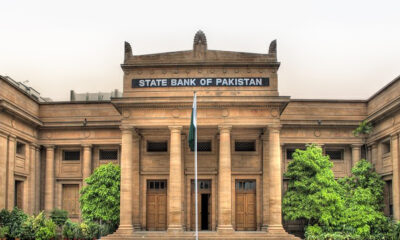- Ogra has determined 45% to 50% hike on June 2.
- IMF to review next loan tranche in Nov this year.
- As per law, Ogra must notify required raise in tarrif.
ISLAMABAD: Amid failure to notify a hike in gas tariff, Pakistan is likely to face annoyance from the International Monetary Fund (IMF) ahead of its next review under the $3 billion Stand-By Arrangement (SBA).
The Oil and Gas Regulatory Authority (Ogra) had already determined a 45% to 50% hike on June 2 this year, but following the government’s failure, annoyance from the Washington-based lender may become inevitable before it reviews the country’s SBA loan for the next tranche of $1 billion in November this year.
The caretaker setup Islamabad, therefore, is left with no option but to approve the hike by 45% to 50%. Ogra has also sensitised the interim administration regarding the imperative increase in gas prices, ahead of the top Energy Ministry officials told The News.
The country’s gas regulator had last announced a 50% increase in prices (Rs415.11 per MMBTU) for consumers of the Sui Northern Gas Pipeline Limited (SNGPL) bringing the subscribed gas price up to Rs1238.68 per MMBTU. Ogra also hiked prices by 45% (417.23 per MMBTU) for the consumers of Sui Southern Gas Company Limited (SSGCL) for 2023-24.
“The relevant authorities have sensitised caretaker federal minister for energy how imperative an increase in gas prices is. If the government does not take the required action in 40 days after the determination by Ogra, then the regulator must notify the required raise in gas price as per the law amended on the directives of IMF and World Bank.
Now 83 days have elapsed since the determination by Ogra about an increase in gas prices by 45-50%,” the Energy Ministry officials said.
Both the gas companies are facing a shortfall of Rs657.766 billion. The Fund may also take up this very issue any time with the government prior to the review meetings.
The Petroleum Division tailored various scenarios for an increase in gas prices based on political damage control under which low-class consumers would be passed less increase and high-end consumers would be passed on the maximum increase to compensate for the low-end consumers.
However, the former Pakistan Democratic Movement (PDM) government failed to take the decision to this effect and now the responsibility rests with the caretaker setup about an increase in gas tariff.
The SNGPL still has the previous year’s accumulative shortfall of Rs560.378 billion up to FY23, while Sui Southern has a shortfall of Rs97.388 billion and this is how the existing shortfall of both the gas companies stands at Rs657.766 billion.
The IMF wants the government to carve a strategy to end oil and gas sector circular debt which stands at Rs1.7 trillion, out of which gas sector circular debt is at Rs1.3 trillion. The PDM government had submitted a plan to the IMF to manage the gas sector’s circular debt based on the dividends plowing back schemes to reduce Rs543 billion without the consultation of Oil & Gas Development Company (OGDCL).
According to the plan, the federal government would inject around Rs414 billion into the Sui Northern and Sui Southern gas companies through supplementary grants for payment of outstanding dues to gas producers, OGDCL, Pakistan Petroleum Limited (PPL) and Government Holdings (Private) Limited (GHPL).
Out of these funds, the Sui Northern Gas Pipelines Limited (SNGPL) and the Sui Southern Gas Company Limited (SSGCL) would clear outstanding liabilities of about Rs225 billion to the OGDCL, Rs62 billion to the PPL and Rs127 billion to the GHPL. On top of these, OGDCL and PPL would arrange about Rs56 billion on their own and partially liquidate some of the investment bonds.
In return, the three gas producers would pay Rs475 billion dividends to the federal government on their retained earnings, estimated to be around Rs1.44 trillion as of June 30, 2022. The government currently holds 100% stakes in GHPL, 85% in OGDCL and 75% in PPL.

 Latest News2 days ago
Latest News2 days ago
 Latest News2 days ago
Latest News2 days ago
 Latest News2 days ago
Latest News2 days ago
 Latest News2 days ago
Latest News2 days ago
 Latest News2 days ago
Latest News2 days ago
 Latest News2 days ago
Latest News2 days ago
 Latest News2 days ago
Latest News2 days ago
 Latest News2 days ago
Latest News2 days ago























